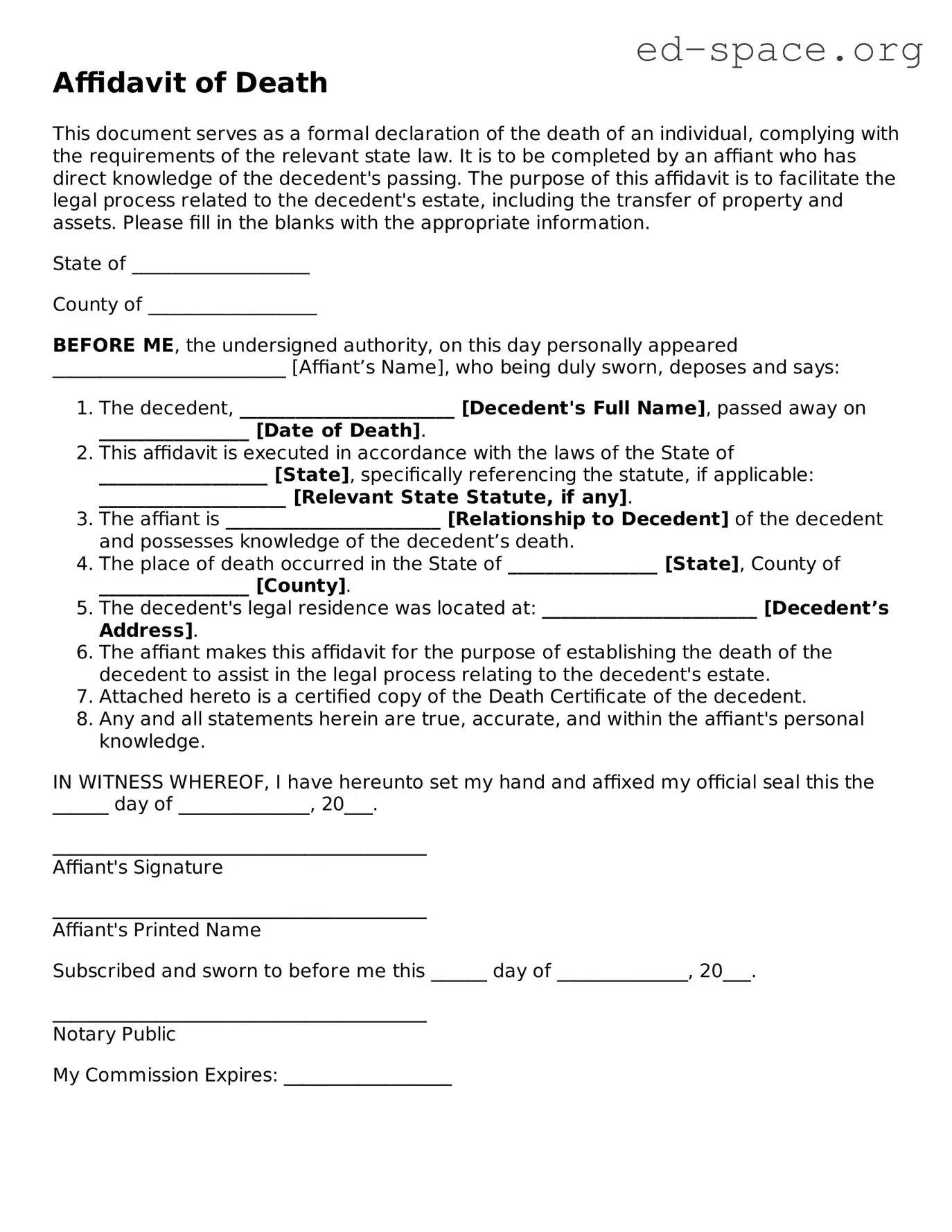What is an Affidavit of Death?
An Affidavit of Death is a legal document used to formally declare the death of a person. It serves as proof for legal and financial institutions that a person has passed away, thus facilitating the process of transferring assets, claiming benefits, or making changes to titles and deeds.
Who needs to file an Affidavit of Death?
This document is typically filed by the executor of the deceased's estate or by a close family member. It's necessary when dealing with the deceased's assets that are not automatically transferred upon death, such as real estate or certain financial accounts.
When should an Affidavit of Death be filed?
It should be filed as soon as possible after the person's passing, especially if it's required to access or distribute their assets. Timelines can vary depending on the asset holders' policies and the jurisdiction, but prompt filing avoids complications or delays in estate resolution.
What information is required in an Affidavit of Death?
The affidavit requires detailed information, including the deceased's full name, date of death, and details of the person filing the affidavit. It may also need a legal description of property and a certified copy of the death certificate attached.
Where should an Affidavit of Death be filed?
The affidavit must be filed with the appropriate government offices, typically the county recorder or similar entity where the deceased's property is located. It may also need to be presented to financial institutions, insurance companies, and other entities holding the deceased's assets.
Is there a fee for filing an Affidavit of Death?
Yes, most jurisdictions require a filing fee for recording the affidavit in public records. The exact cost can vary widely depending on the locality. It's advisable to check in advance with the specific office where the document will be filed.
Can an Affidavit of Death be contested?
While it's uncommon, affidavits can be contested, typically by someone who stands to benefit from the estate or believes the affidavit has been filed incorrectly. Contesting this document usually requires legal proceedings, and it is advisable to seek legal advice if such a situation arises.
What legal effect does an Affidavit of Death have?
It acts as a legal tool to notify third parties of the death, allowing for the official transfer of ownership and the resolution of the deceased's affairs. While it doesn't grant inheritance rights by itself, it's a critical step in the process of estate settlement and resolution.
